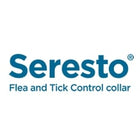
What is Skin Disease in Cats?
A cat’s skin is its most extensive organ, acting as a shield against infections and external factors. However, nearly 25% of cats experience skin problems at some point. Skin diseases in cats refer to various conditions affecting the epidermis, causing discomfort, irritation, and sometimes severe pain. These issues can range from allergies and bacterial infections to cysts and abscesses, significantly impacting your cat’s overall health and well-being.
Common Symptoms of Skin Disease in Cats
Skin diseases can manifest in different ways, but some of the most common observed symptoms include:
- Red or inflamed skin
- Persistent itching or scratching
- Hair loss (alopecia)
- Scabs, flakes, or crusty patches
- Open sores or ulcers
- Lumps, bumps, or swelling
- Excessive licking or grooming
- Dry, flaky, or greasy skin
If your cat shows any of these signs, it's important to visit a veterinarian for a precise diagnosis and the right treatment plan.
Timely identification and care play a key role in managing skin conditions effectively. This guide covers common feline skin issues, their symptoms, causes, diagnostic methods, and treatment options.
What Causes Skin Disease in Cats?
Several factors can contribute to cat skin diseases, including allergies, infections, and underlying health conditions. The most common causes include:
1. Allergies
- Food Allergies – Reactions to specific ingredients such as chicken, dairy, or grains.
- Environmental Allergies – Sensitivities to pollen, dust mites, mold, or household chemicals.
- Flea Allergy Dermatitis (FAD) – A reaction to flea bites, even in small numbers.
2. Infections & Parasites
- Bacterial or Fungal Infections – Often resulting from untreated wounds or weakened immunity.
- Mange (Mites) – A parasitic skin disease causing severe itching and hair loss.
- Ringworm (Fungal Infection) – A contagious skin condition causing circular bald patches.
3. Other Skin Conditions
- Feline Acne – Blocked hair follicles leading to blackheads or pimples, often around the chin.
- Abscesses – Painful, pus-filled lumps caused by bites or injuries.
- Autoimmune Disorders – Disorders in which the immune system mistakenly targets and damages skin cells.
Certain breeds may be more prone to specific skin issues, and factors like age, diet, and environmental exposure can influence a cat’s susceptibility to skin diseases.
How is Skin Disease Diagnosed in Cats?
Diagnosing skin conditions in cats requires a thorough examination by a veterinarian. The process may include:
- Physical Examination – Assessing the skin, fur, and overall health.
- Medical History Review – Identifying potential allergens, diet, or environmental triggers.
- Skin Scraping or Biopsy – Collecting samples to check for mites, infections, or abnormal cells.
- Allergy Testing – Determining potential food or environmental allergies.
- Blood Tests – Checking for underlying conditions affecting the skin.
In certain situations, veterinarians may suggest trial treatments like adjusting the diet or implementing flea prevention to help pinpoint the underlying cause of the skin condition.
Treatment Options for Skin Diseases in Cats
Treating skin diseases in cats depends on the specific condition and underlying cause. Common treatments include:
1. Medicated Shampoos & Topical Treatments
- Antibacterial or antifungal shampoos for infections.
- Moisturizing or anti-itch solutions to soothe irritation.
2. Prescription Medications
- Antibiotics – To treat bacterial infections.
- Antifungal Medications – For fungal skin conditions like ringworm.
- Steroids or Antihistamines – To manage allergies and inflammation.
3. Dietary Adjustments
- Switching to hypoallergenic cat food if food allergies are suspected.
- Avoiding grains, dairy, or common protein allergens.
4. Flea & Parasite Control
- Monthly flea treatments to prevent flea allergy dermatitis.
- Deworming if parasitic infections are present.
5. Environmental Modifications
- Regular cleaning of bedding and litter boxes to minimize allergens.
- Using air purifiers to reduce airborne allergens.
Your Veterinarian will decide the most suitable treatment plan based on the diagnosis.
Recovery & Long-Term Care for Cats with Skin Disease
Most skin conditions can be successfully managed with proper treatment and ongoing care. To ensure your cat stays healthy:
- Follow your vet’s treatment plan carefully.
- Maintain a balanced diet tailored to your cat’s needs.
- Keep up with regular flea prevention and grooming.
- Monitor for any recurrence of symptoms and seek veterinary care as needed.
While some chronic skin conditions may not be completely curable, they can be well-managed with the proper care and attention.
Final Thoughts
Skin conditions in cats are quite common, but with timely detection, accurate diagnosis, and the right treatment, your feline companion can remain healthy and comfortable. If you observe any skin issues, seek veterinary advice promptly. Early intervention and preventive care help keep your cat itch-free and happy!






